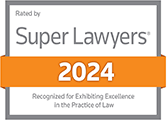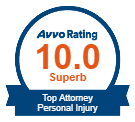You exit the parking garage after an extremely long day at work. You’re tired, your eyes hurt and all you want to do is sleep. Your plan was to avoid in-town traffic and take the highway as quickly as possible toward your salvation—your warm fluffy bed. Unfortunately, Mother Nature has a different plan. As soon as you pull out of the garage, you hear a loud thunderclap and a sheet of rain covers your windshield. You can barely see the tail lights of the car in front of you, and you can’t make out the road lines at all. You instantly know that the highway is out of the question, unless by some miracle this Biblical rain eases up within the next few minutes.
Unfortunately, not taking the highway still isn’t going to solve your visibility problem. Sure you’ll be safer going slower on the back roads, but you still can’t see far enough ahead of you to go more than 10 mph. What are you supposed to do? How are you supposed to get home during the second coming of Noah’s flood?
Improving Your Driver Visibility in Blinding Weather
According to the U.S. Department of Transportation, nearly 400,000 accidents occur, 2,000 people a year die, and 150,000 are injured due to “weather blindness.” Weather blindness is when rain, fog, snow, or even sunlight causes temporary vision difficulties while driving. If a driver can’t see past the front end of his own car, he is much more likely to run into the objects, cars and people beyond his range of visibility.
The number of accidents this phenomenon causes is mind-boggling, especially when you consider that you would never imagine a legally blind person driving. However, when weather circumstances decrease drivers’ visibility to that of near blindness, too many of them seem to think it’s O.K. to continue driving without precautions. To be clear, this is not O.K.
Not only does driving with decreased visibility put yourself and family in danger, but it also puts those around you at risk. Additionally, weather is not an acceptable legal excuse for causing an accident. Therefore, to protect your family, your reputation, your pocketbook, and the lives of those around you, make sure you know the following safety guidelines to properly navigate weather blindness.
Sunlight:
- Use your visor or sunglasses to cut the glare
- Focus on the white road lines to be sure you’re staying in the proper lane
- If possible, only travel north or south until the sun rises higher or sets lower (out of glare range)
Fog:
- Use your low beams, not your brights. Although it may seem like a good idea to turn your brights on in fog, the high beams will actually bounce back at you off the fog, further decreasing your ability to see
- Drive slowly
- Pay attention to the road lines
- Use your wipers and the defroster to curb excess moisture
- Turn off your radio and listen for traffic you can’t see
Rain and Snow:
- If it’s daylight, try using sunglasses to cut down on the reflection of the raindrops or snow
- Use your wipers and defroster
- Turn on your lights (not only will it help you see, but it will help other motorists see you)
- Drive slowly
- Pay attention to white sidelines
- Follow the car ahead of you. Keep an adequate distance between your vehicles, but allow the car ahead of you to create a path to follow
- If it is too difficult to see, pull off the road immediately until the downpour or blizzard eases up
Focusing on Your Future
Even when you drive as cautiously as possible, the three things you can’t control are other people’s actions, the weather, and how much your injuries will cost. Even though you can’t control them, you can protect yourself from them. Contact us today to discuss your legal options for injury and damage compensation following a car collision. We can help you bring your claim to the forefront and help you get the settlement you and your family deserve. Don’t allow someone else’s poor decisions affect your family’s future. Call now!
Make sure your family and friends know how to avoid weather blindness by sharing this page via Facebook or Twitter. Know someone who has recently been involved in a collision? Tell him to contact us directly to discuss any potential questions or concerns he may have about his accident. Remember, the consultation is free, but the advice and support we give is worth a lot more.
|
Related Links: |







